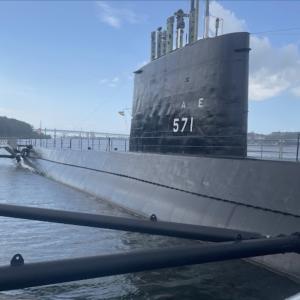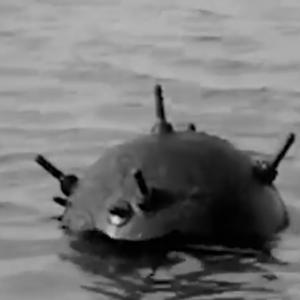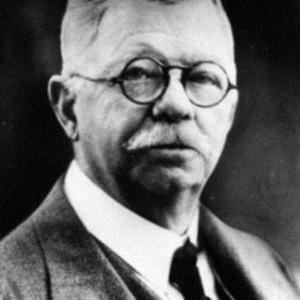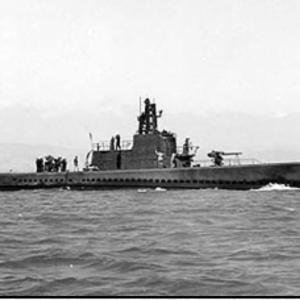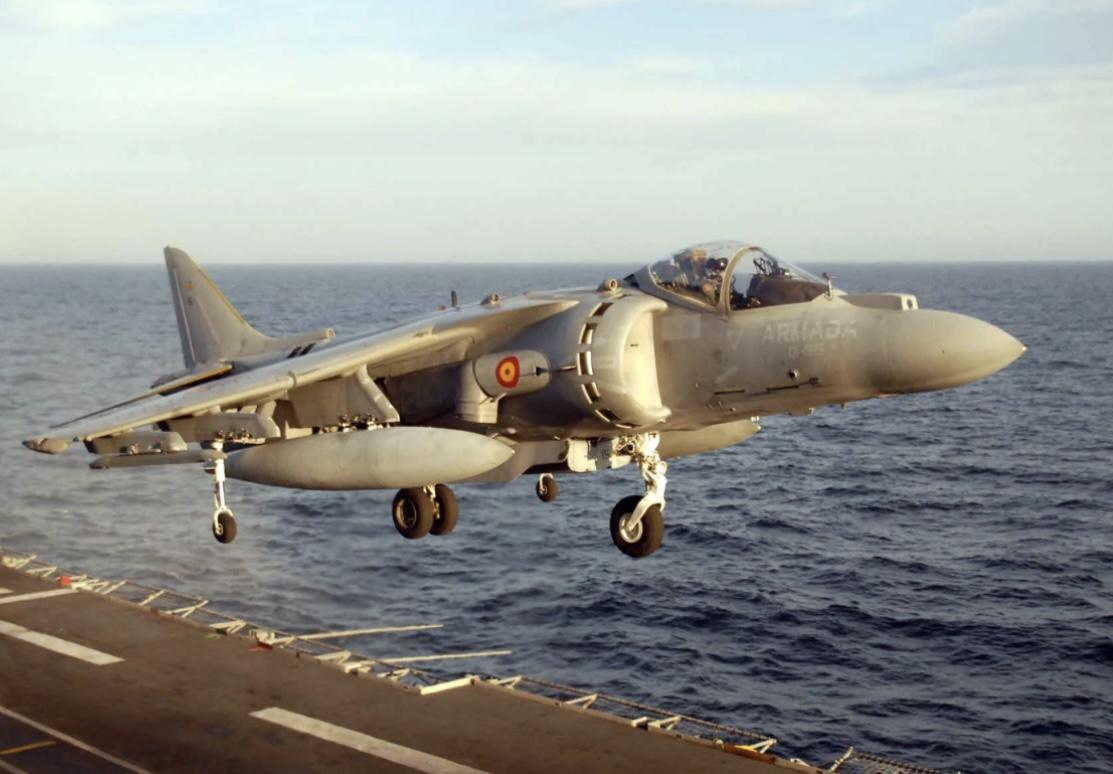
Sea Harrier Jump Jet
The Sea Harrier, an iconic aircraft of the 20th century, was a specialised version of the Harrier Jump Jet designed to operate from aircraft carriers and smaller ships. The Sea Harrier’s vertical and short takeoff and landing (V/STOL) capabilities revolutionised naval aviation by allowing for flexible, rapid deployment from confined spaces, such as the decks of ships, which were not suited for conventional aircraft. This unique feature gave it a significant tactical advantage in both military and peacekeeping operations, making it one of the most versatile combat aircraft in history.
Development and Design
The Sea Harrier’s design was based on the original Hawker Siddeley Harrier, which was developed in the 1960s by Hawker Siddeley Aircraft Ltd (later British Aerospace). The Harrier itself was a groundbreaking aircraft that combined the speed and maneuverability of a jet fighter with the ability to take off and land vertically or on short runways. The Rolls-Royce Pegasus engine, which was capable of directing its thrust downward via swiveling nozzles, provided the essential capability for vertical takeoff and landing (VTOL) operations.
The design of the Sea Harrier was an adaptation of the Harrier, specifically modified for naval operations. The primary goal was to create a fighter that could be deployed from smaller aircraft carriers, or even from makeshift landing pads, which were crucial in a number of conflict scenarios. The Sea Harrier’s key innovation was its ability to operate from relatively small ships, enabling rapid deployment and providing a versatile range of capabilities.
The Sea Harrier entered service with the Royal Navy in 1969 under the designation Sea Harrier FRS1 (Fighter/Reconnaissance Strike 1). Unlike previous versions of the Harrier, the Sea Harrier was optimised for naval operations, with modifications such as more rugged landing gear, enhanced avionics, and a stronger airframe to withstand the stresses of operating from aircraft carriers.
The Sea Harrier's Pegasus engine was one of its defining features. Unlike conventional engines, the Pegasus had four rotating nozzles that allowed the aircraft to perform vertical takeoff, hover, and vertical landing (VTL). This was a breakthrough in aviation technology, and it gave the Sea Harrier significant operational flexibility in a range of scenarios, from close air support to air superiority.
Role in the Falklands War
The Sea Harrier gained global recognition during the Falklands War in 1982, when it was deployed by the British Royal Navy to defend the Falkland Islands, which were invaded by Argentina. The Sea Harrier played a critical role in the conflict, providing both air superiority and ground-attack capabilities for the British forces.
One of the Sea Harrier’s most remarkable achievements during the Falklands War was its ability to operate from the relatively small decks of HMS Invincible and HMS Hermes, two British aircraft carriers that were part of the task force. The Sea Harrier was able to take off and land in the most challenging conditions, as the conflict involved unpredictable weather, rough seas, and the constant threat of enemy air attacks.
The Sea Harrier’s mission in the Falklands was multifaceted. The aircraft provided combat air patrols (CAP) to protect the task force from Argentine aircraft, many of which were armed with bombs and anti-ship missiles. The Sea Harrier was equipped with Skyflash radar-guided missiles, AIM-9 Sidewinder infrared-guided missiles, and 30mm ADEN cannons, giving it the ability to engage enemy aircraft at both close and long range.
The Sea Harriers also carried out strike missions against Argentine ground forces and infrastructure, including the Skyhawk and Dagger attack aircraft, and provided close air support to British troops fighting on the ground. Additionally, Sea Harriers were responsible for conducting anti-shipping strikes, using bombs and rockets to attack Argentine vessels, particularly exocet missile-equipped ships.
The Sea Harrier’s success in the Falklands War was a defining moment in the aircraft’s history. The Royal Navy’s Harrier force achieved an impressive kill ratio, downing several Argentine aircraft, including the A-4 Skyhawk, Mirage III, and Dagger fighter jets, without suffering significant losses in return. This success solidified the Sea Harrier’s reputation as a formidable and adaptable aircraft.
Post-Falklands Service
Following the Falklands War, the Sea Harrier continued to serve in various military operations, showcasing its operational flexibility. The aircraft was used in the 1991 Gulf War, where it flew from HMS Ark Royal and participated in combat missions over Iraq and Kuwait. In the Gulf War, Sea Harriers provided close air support for coalition ground forces, carried out combat air patrols to defend ships and ground targets, and engaged enemy missile sites and tanks.
In addition to its combat roles, the Sea Harrier was involved in peacekeeping operations. For example, it was deployed during NATO interventions in the Balkans in the 1990s, providing air support for peacekeeping missions, as well as humanitarian assistance in conflict zones such as Bosnia and Kosovo. The Sea Harrier continued to be used in these roles well into the early 2000s, participating in NATO’s Operation Allied Force and other international operations.
The Sea Harrier’s Armament
The Sea Harrier was a highly versatile multirole aircraft, capable of carrying a wide variety of weapons for different types of missions, including air-to-air combat, close air support, and strike missions. Some of its key armament options included:
- Air-to-Air Missiles:
- AIM-9 Sidewinder: A short-range infrared-guided missile designed for air-to-air combat, used to target enemy aircraft in dogfights.
- Skyflash: A longer-range, radar-guided missile used to engage enemy aircraft at a greater distance.
- Bombs:
- The Sea Harrier was equipped with a range of conventional bombs for ground attack missions, as well as precision-guided munitions (PGMs) like the Laser Guided Bomb (LGB) for high-accuracy strikes on targets such as enemy command centers, airfields, and anti-aircraft positions.
- Cannon:
- A 30mm ADEN cannon was mounted on the Sea Harrier, enabling it to perform strafing attacks on both air and ground targets, particularly in close air support missions.
- Air-to-Ground Rockets:
- The Sea Harrier was capable of carrying air-to-ground rockets, which were effective for targeting enemy infantry, vehicles, and fortifications during ground attack missions.
The Sea Harrier's Legacy and End of Service
The Sea Harrier was an essential asset for the Royal Navy for decades, particularly in its role as a versatile aircraft capable of operating from smaller carriers and landing pads. The aircraft’s VTOL capabilities made it a powerful tool for rapid deployment and strike missions in environments where conventional jet fighters could not operate.
However, as aviation technology advanced, the Sea Harrier was eventually replaced by newer models such as the Harrier GR5/GR7/GR9 variants, and, eventually, by the F-35B Lightning II. The F-35B, with its stealth capabilities, advanced avionics, and improved VTOL performance, marked the next generation of V/STOL aircraft, offering even greater operational flexibility and multirole capabilities for modern naval forces.
The Sea Harrier was retired from Royal Navy service in 2006, but its legacy lives on through the continued use of V/STOL aircraft by various nations, and in the development of modern aircraft like the F-35B, which shares many of the Sea Harrier’s capabilities.
The Sea Harrier remains a symbol of naval aviation innovation, representing a major leap in the development of vertical takeoff and landing technology, and demonstrating the importance of flexibility in modern military operations. Its success in multiple conflicts, particularly the Falklands War, ensures its place in the annals of aviation history as one of the most unique and impactful aircraft ever built.

